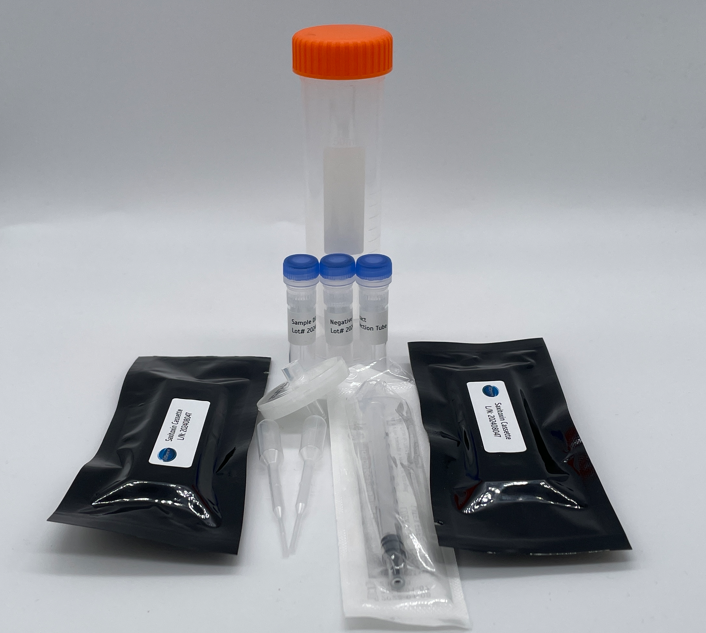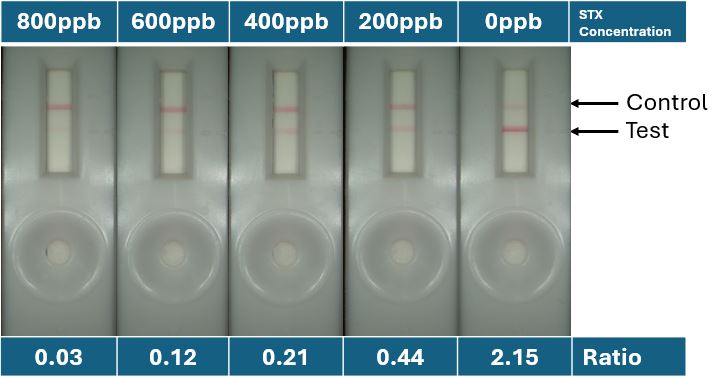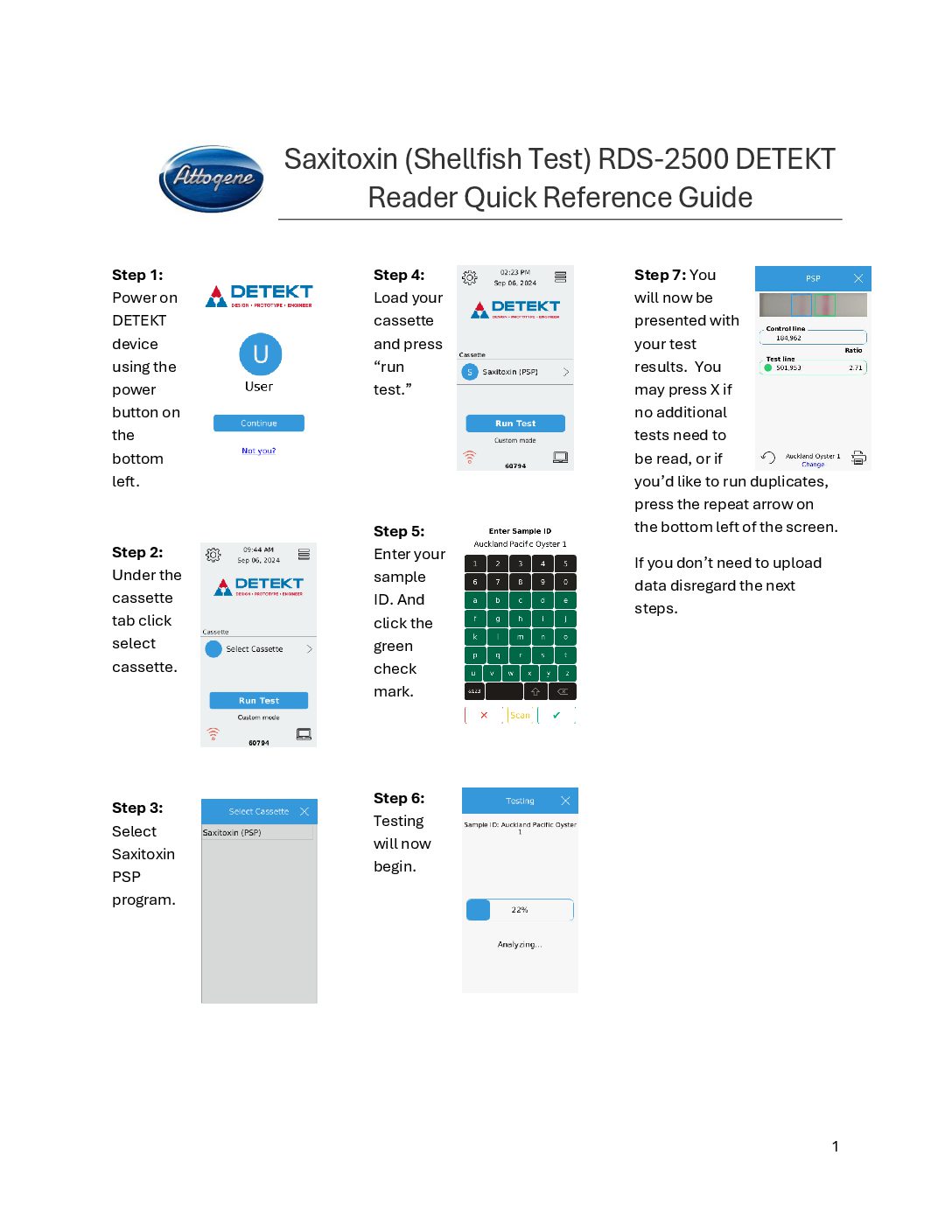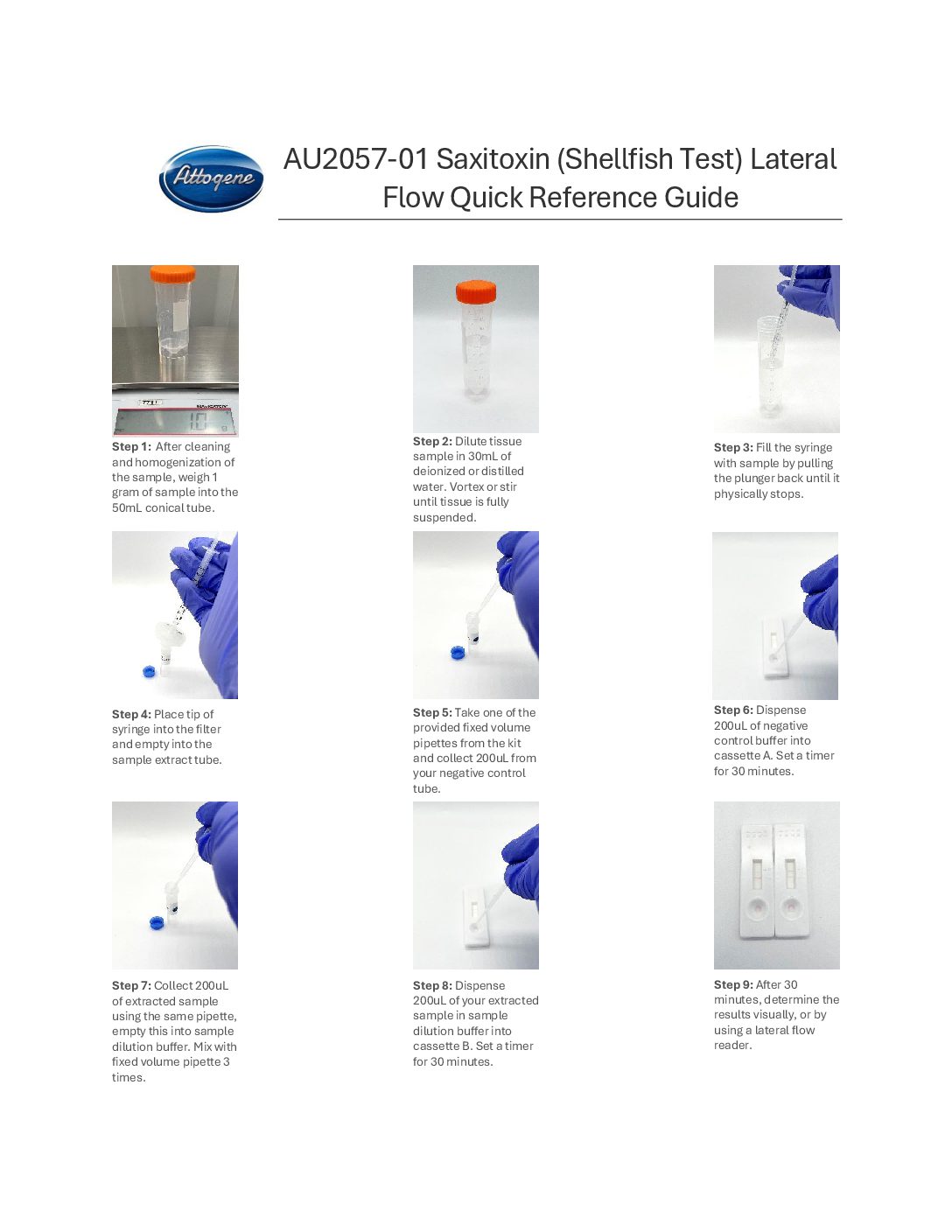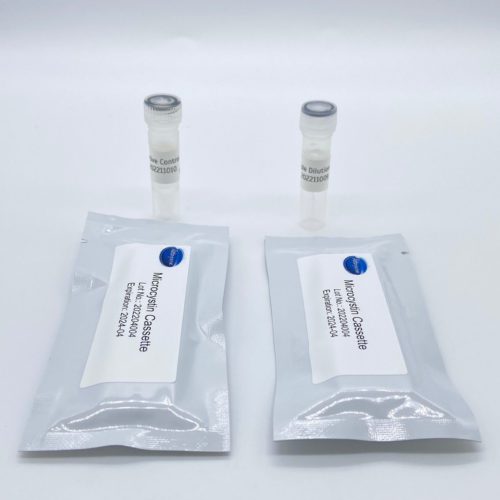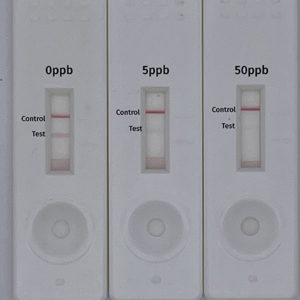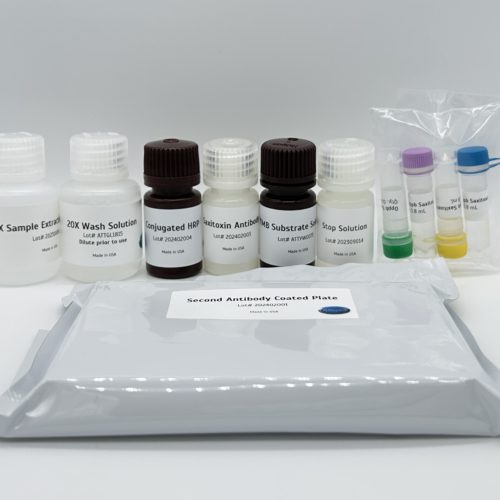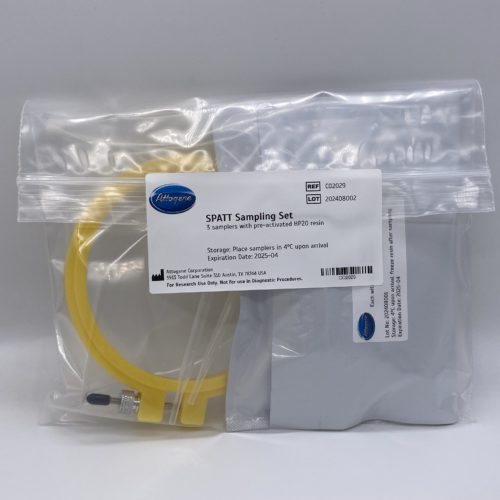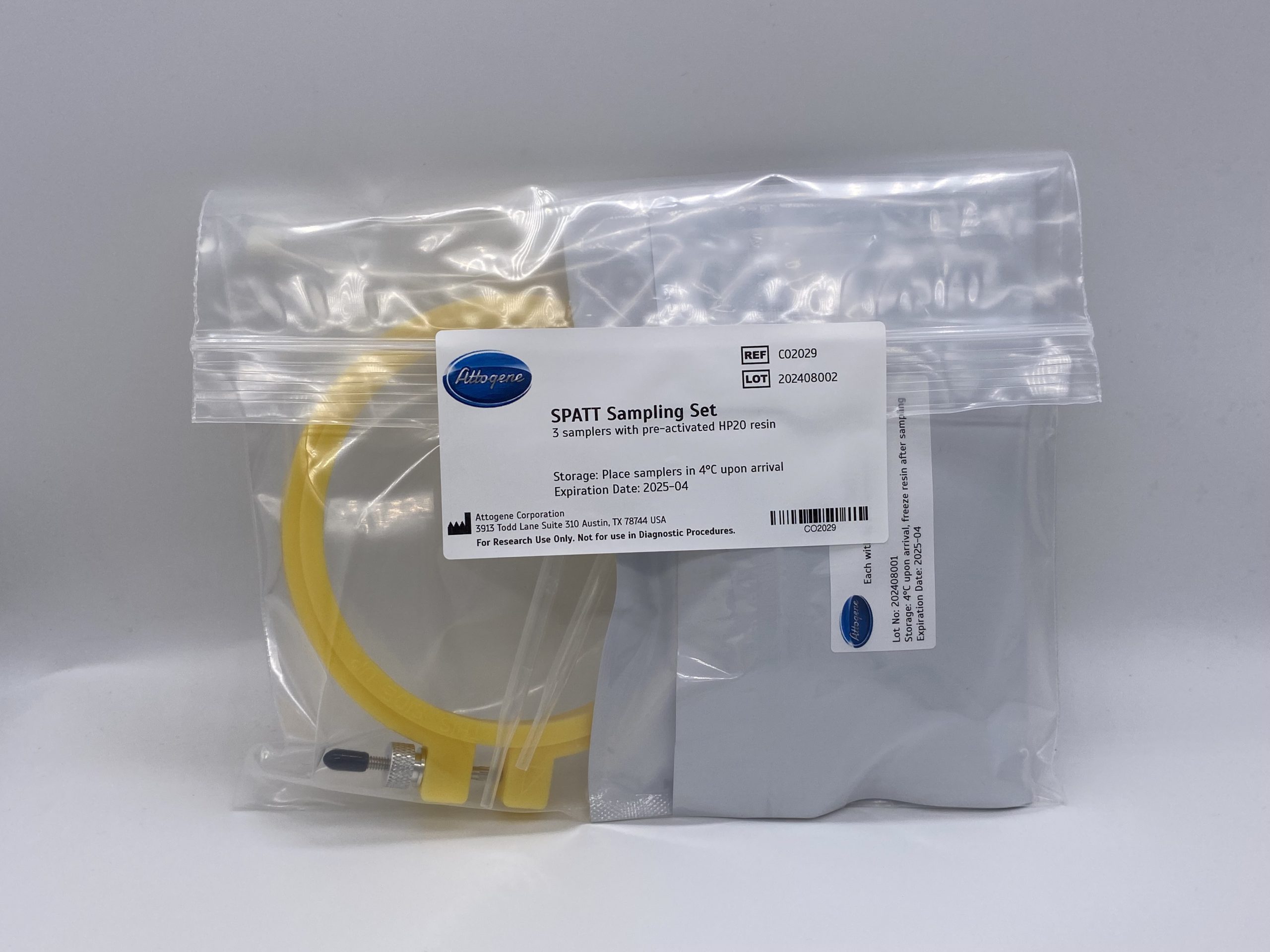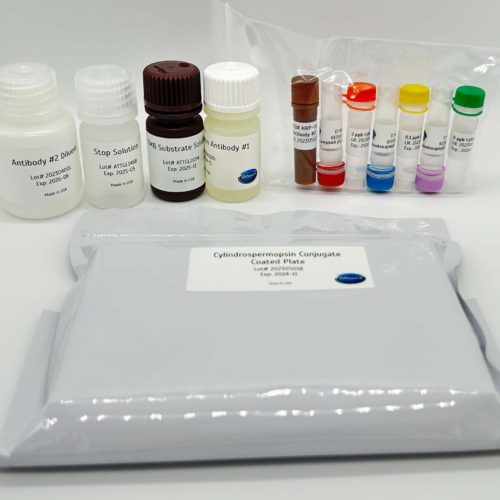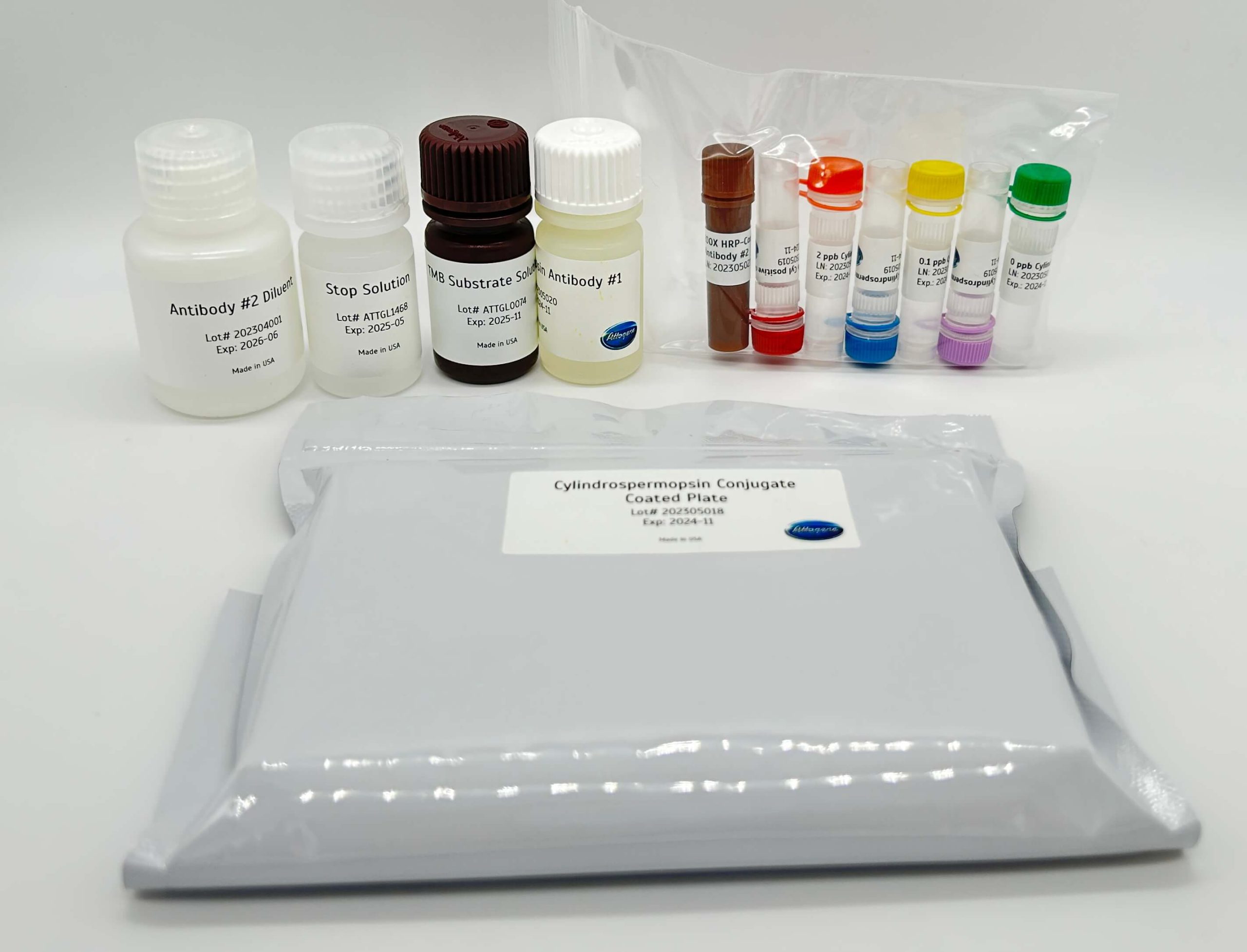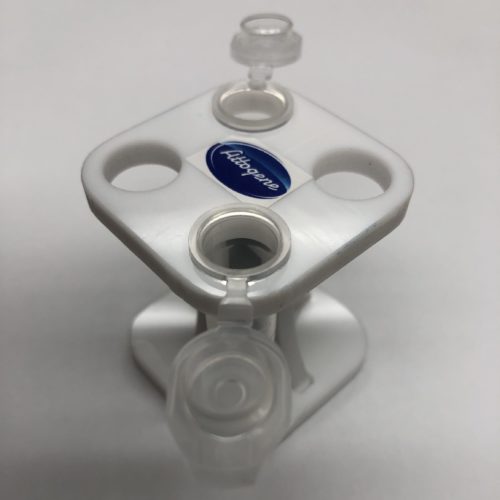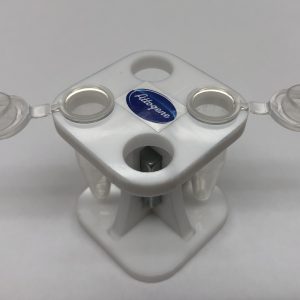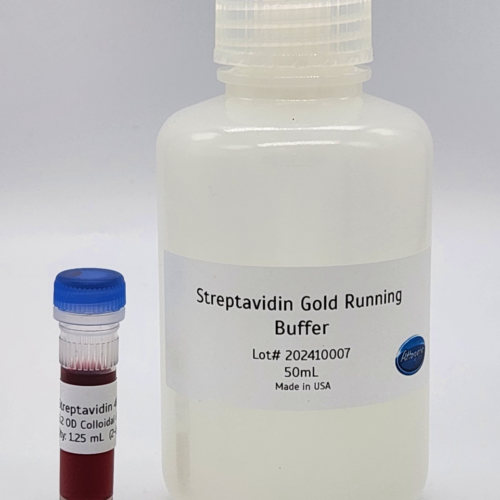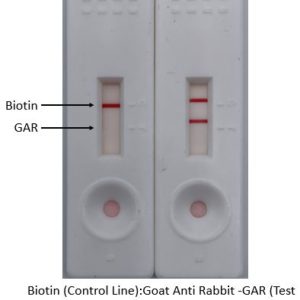Saxitoxin (PSP) Lateral Flow Kit (Shellfish Rapid Test)
$424.62
In Stock & Ready to Ship
- Screening of saxitoxin in shellfish samples as low as 50ppb in sample
- Format: 25 tests (12 tests, 12 controls)
- Filters, syringes, extract collection tubes, buffers
- Run Time: 30 Minutes
Saxitoxins (STXs) are naturally occurring alkaloids produced by some marine dinoflagellates and by strains of various species of freshwater cyanobacteria. Saxitoxin is one of the prevalent paralytic shellfish toxins (PSTs). It belongs to a family of potent neurotoxins with a molecular weight around 300 Da. Saxitoxin and its derivatives are alkaloids composed of a tetrahydropurine ring system with a highly polar guanidinium group. Due to their significant toxicity, saxitoxins are closely monitored in marine environments where they can accumulate in the food chain during harmful algal blooms (HABs). An action level of 800ppb, or 80ug per 100grams of shellfish, has been established.
You may also like…
Microcystin Detection Kit (Rapid – Lab)
$129.00- Screening of Algae Toxins Microcystins and Nodularins
- Format: 10 tests (5 tests/5 control)
- Not provided: Water Sample Bottles
- Run Time: 10 Minutes
Saxitoxin (PSP) ELISA Kit
$532.12- 96-well microtiter plate (12 test strips of 8 wells)
- Standards: 0 | 0.02 | 0.08 | 0.32 ppb
- Incubation Time: 60 Minutes.
Solid Phase Adsorption Toxin Tracking (SPATT) Bag Set
$80.62- Set of three Solid Phase Adsorption Toxin Tracking (SPATT) Bags
- Pre activated
- Ready for deployment
- HP20
Microcystin Detection Kit (Rapid – Finished Drinking Water)
$155.88
- Screening of Microcystins in water samples at 0.1 ppb (drinking water)
- Format: 10 tests (5 tests/5 controls)
- Not provided: Water Sample Bottles
- Run Time: 15 Minutes
- Finished Drinking Water
Cylindrospermopsin ELISA Kit
$456.88- Format: 96-well microtiter plate (12 test strips of 8 wells)
- Standards: 0 | 0.03 | 0.10 | 0.2 | 2 ppb
- Incubation Time: 45 Minutes
- Compatible for use with US EPA Method 546
